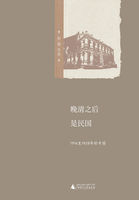The fervent heat of the Siemens furnace led the inventor to devise a novel means of measuring high temperatures, which illustrates the value of a broad scientific training to the inventor, and the happy manner in which William Siemens, above all others, turned his varied knowledge to account, and brought the facts and resources of one science to bear upon another. As early as 1860, while engaged in testing the conductor of the Malta to Alexandria telegraph cable, then in course of manufacture, he was struck by the increase of resistance in metallic wires occasioned by a rise of temperature, and the following year he devised a thermometer based on the fact which he exhibited before the British Association at Manchester. Mathiessen and others have since enunciated the law according to which this rise of resistance varies with rise of temperature; and Siemens has further perfected his apparatus, and applied it as a pyrometer to the measurement of furnace fires. It forms in reality an electric thermometer, which will indicate the temperature of an inaccessible spot. A coil of platinum or platinum-alloy wire is enclosed in a suitable fire-proof case and put into the furnace of which the temperature is wanted. Connecting wires, properly protected, lend from the coil to a differential voltameter, so that, by means of the current from a battery circulating in the system, the electric resistance of the coil in the furnace can be determined at any moment.
Since this resistance depends on the temperature of the furnace, the temperature call be found from the resistance observed. The instrument formed the subject of the Bakerian lecture for the year 1871.
Siemens's researches on this subject, as published in the JOURNAL OFTHE SOCIETY OF TELEGRAPH ENGINEERS (Vol. I., p. 123, and Vol. III., p.
297), included a set of curves graphically representing the relation between temperature and electrical resistance in the case of various metals.
The electric pyrometer, which is perhaps the most elegant and original of all William Siemens's inventions, is also the link which connects his electrical with his metallurgical researches. His invention ran in two great grooves, one based upon the science of heat, the other based upon the science of electricity; and the electric thermometer was, as it were, a delicate cross-coupling which connected both. Siemens might have been two men, if we are to judge by the work he did; and either half of the twin-career he led would of itself suffice to make an eminent reputation.
The success of his metallurgical enterprise no doubt reacted on his telegraphic business. The making and laying of the Malta to Alexandria cable gave rise to researches on the resistance and electrification of insulating materials under pressure, which formed the subject of a paper read before the British Association in 1863. The effect of pressure up to 300 atmospheres was observed, and the fact elicited that the inductive capacity of gutta-percha is not affected by increased pressure, whereas that of india-rubber is diminished. The electrical tests employed during the construction of the Malta and Alexandria cable, and the insulation and protection of submarine cables, also formed the subject of a paper which was read before the Institution of Civil Engineers in 1862.
It is always interesting to trace the necessity which directly or indirectly was the parent of a particular invention; and in the great importance of an accurate record of the sea-depth in which a cable is being laid, together with the tedious and troublesome character of ordinary sounding by the lead-line, especially when a ship is actually paying out cable, we may find the requirements which led to the invention of the 'bathometer,' an instrument designed to indicate the depth of water over which a vessel is passing without submerging a line.
The instrument was based on the ingenious idea that the attractive power of the earth on a body in the ship must depend on the depth of water interposed between it and the sea bottom; being less as the layer of water was thicker, owing to the lighter character of water as compared with the denser land. Siemens endeavoured to render this difference visible by means of mercury contained in a chamber having a bottom extremely sensitive to the pressure of the mercury upon it, and resembling in some respects the vacuous chamber of an aneroid barometer.
Just as the latter instrument indicates the pressure of the atmosphere above it, so the bathometer was intended to show the pull of the earth below it; and experiment proved, we believe, that for every 1,000fathoms of sea-water below the ship, the total gravity of the mercury was reduced by 1/3200 part. The bathometer, or attraction-meter, was brought out in 1876, and exhibited at the Loan Exhibition in South Kensington. The elastic bottom of the mercury chamber was supported by volute springs which, always having the same tension, caused a portion of the mercury to rise or fall in a spiral tube of glass, according to the variations of the earth's attraction. The whole was kept at an even temperature, and correction was made for barometric influence. Though of high scientific interest, the apparatus appears to have failed at the time from its very sensitiveness; the waves on the surface of the sea having a greater disturbing action on its readings than the change of depth. Siemens took a great interest in this very original machine, and also devised a form applicable to the measurement of heights. Although he laid the subject aside for some years, he ultimately took it up again, in hopes of producing a practical apparatus which would be of immediate service in the cable expeditions of the s.s. Faraday.















